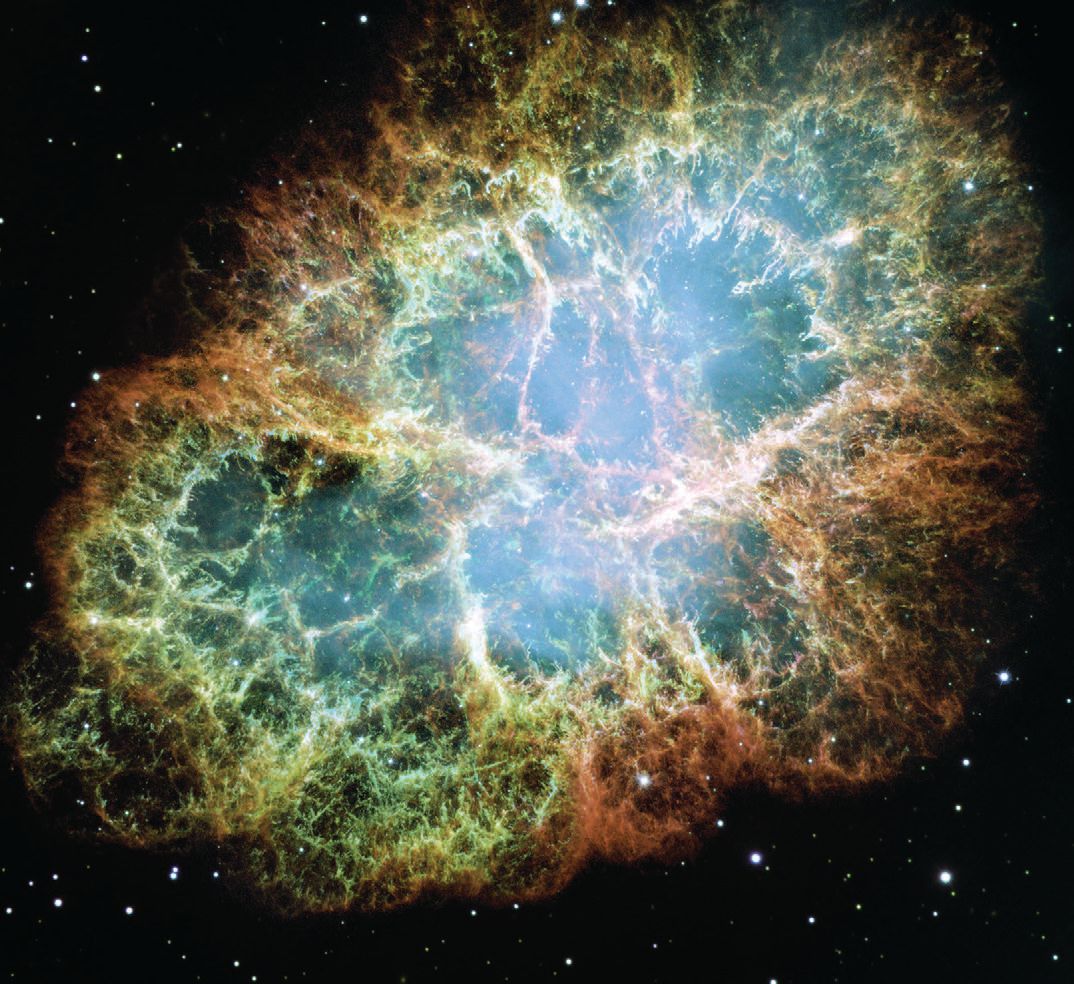Billion-year-old carbon
Evan Zabawski | TLT From the Editor October 2013
The stellar origin of hydrocarbons.

Though there isn’t one singular explanation for how hydrocarbons form, astrophysicists agree on the origin of the hydrogen and carbon atoms themselves.
HOW DO HYDROCARBONS FORM? The biogenic theory is that petroleum is created from decomposing organic matter from the fossils of plants and tiny marine organisms. Hundreds of thousands of years of sedimentary accumulation result in heat and pressure transforming the matter into a dark waxy substance known as kerogen, which eventually breaks down into molecules mostly composed of hydrogen and carbon.
Some scientists have questioned how heat and pressure could convert organic matter into a homogenous carbon compound, bearing little resemblance to the original molecular structure. One such scientist was Dmitri Mendeleev (of Periodic Table fame) who believed hydrocarbons to be abiogenic.
The abiogenic hypothesis suggests that hydrocarbons are formed from deep carbon deposits below the Earth’s mantle and possibly occurred during the formation of the Earth. In 1877, he stated, “The capital fact to note is that petroleum was born in the depths of the earth, and it is only there that we must seek its origin.”
An astrophysicist named Thomas Gold followed Mendeleev’s suggestion in 1986 with the drilling of a deep borehole at a meteor crater site in Sweden. The thought was that the meteor impact would have opened fractures deep enough to allow methane migration upward, but instead he only brought up half a barrel of oily sludge containing archaebacteria. Gold stated, “It suggests there is an enormous sphere of life, of biology, at deeper levels in the ground than we have had any knowledge of previously.” But his findings were largely criticized. After two more attempts, skeptics remained unconvinced, and the abiogenic hypothesis remains unproven on Earth (Saturn’s giant moon, Titan, has abundant methane).
Though there isn’t one singular explanation for how hydrocarbons form, astrophysicists agree on the origin of the hydrogen and carbon atoms themselves. While chair of astronomy at Cornell University in 1968, Gold had hired one such astrophysicist: Carl Sagan. Sagan is widely known for his 1980 television series,
Cosmos: A Personal Voyage, the most widely watched PBS series in the world, where he was able to convey his ideas about the cosmos in a way audiences could understand. One episode discussed nucleogenesis, the origin of chemical elements from within stars.
The life of stars begins with a cloud of hydrogen gas contracting under gravity and building up heat until nuclear fusion occurs. Afterward a core of helium grows, and if the star doesn’t burn out a further core made of carbon will be created. If the star continues to grow, then two more cores may form, producing many of the other common elements found on Earth.
At this point, since the most stable nuclei have been formed, any further fusion would require absorption of energy. With declining temperatures, gravitational forces start to dominate and the star starts to implode—a reaction called a supernova. This explosion expels the elements into space to form other stars, planets and us. As Sagan said, “The nitrogen in our DNA, the calcium in our teeth, the iron in our blood, the carbon in our apple pies were made in the interiors of collapsing stars. We are made of star stuff.”
Present-day astrophysicist Dr. Neil DeGrasse Tyson concurs by saying, “We are stardust in the highest exalted way,” employing a term also found in the 1969 song Woodstock written by Canadian songstress Joni Mitchell. The song was written as a reaction of her missing out on the festival, unlike then-boyfriend Graham Nash of the folk rock supergroup Crosby, Stills, Nash and Young, who recorded their own version of the song. In it she aptly states, “We are stardust, billion-year-old carbon.”
Scientists will continue to research the mechanisms behind the formation of hydrocarbons until a suitable explanation is found. The answer will not be found in the night sky, but, rather, below the earth. I guess it’s fair to say they’ve got to get themselves back to the garden.
 Evan Zabawski, CLS, is a reliability specialist in Calgary, Alberta, Canada. You can reach him at evan.zabawski@gmail.com
Evan Zabawski, CLS, is a reliability specialist in Calgary, Alberta, Canada. You can reach him at evan.zabawski@gmail.com.